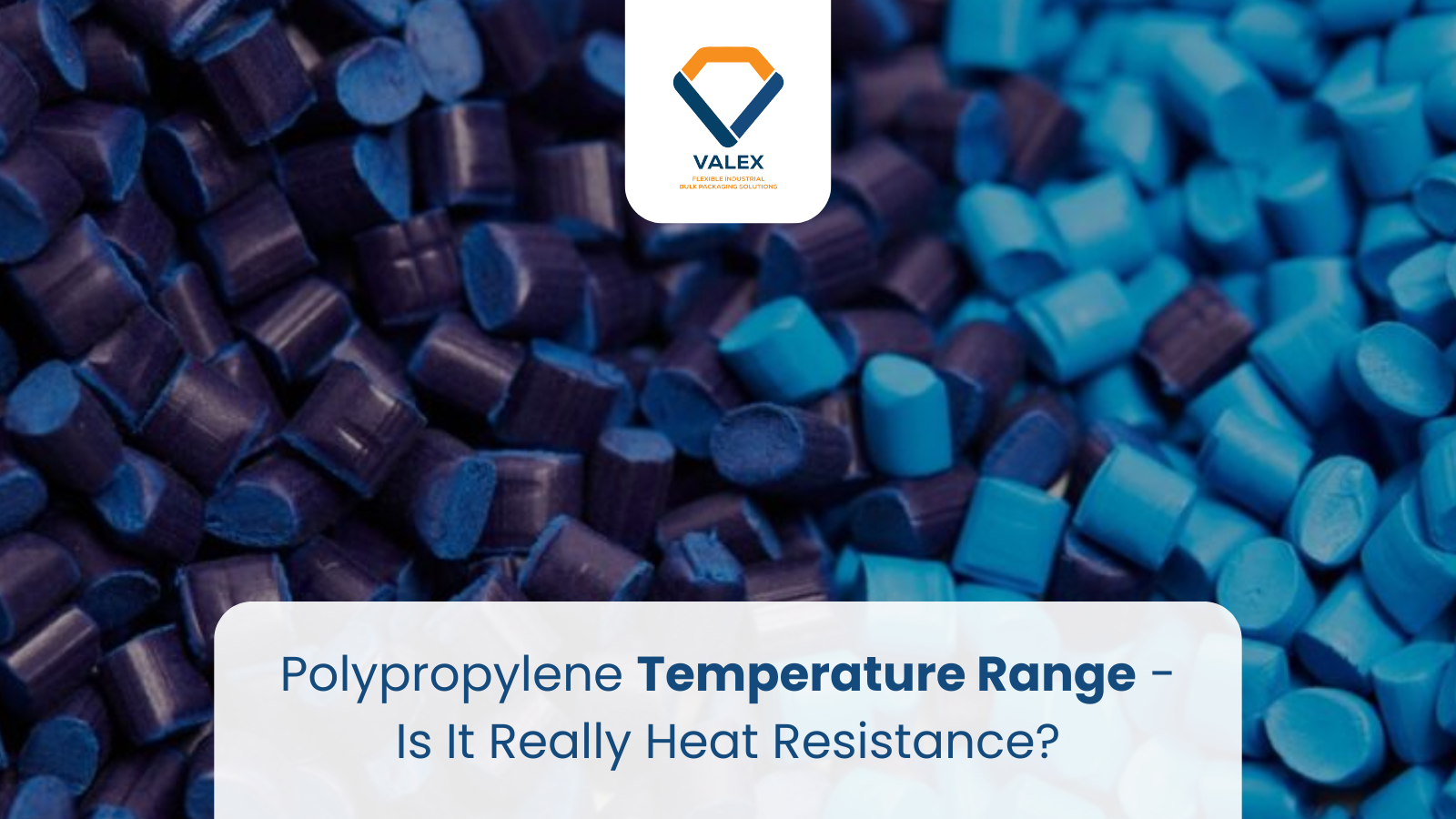Polypropylene is one of the most common plastics in use today. Polypropylene material shows up almost everywhere like FIBC Bags, automotive parts, filter fabrics and medical supplies. A key question many people ask is "what is the polypropylene temperature range?" In other words, how much heat can this polymer tolerate before it loses its strength or shape?
Here we'll try to cover polypropylene temperature tolerance, explore its formula and structure, look at processing temperatures, and highlight real-world polypropylene uses including non-woven fabric applications. For Best Polypropylene FIBC Bags, many turn to Valex Ventures, a trusted FIBC Bag manufacturer in the UK.
Polypropylene (PP) is a thermoplastic polymer made by polymerizing propylene monomers. Its chemical backbone gives it a mix of lightweight strength, chemical resistance, and moderate heat tolerance. The simple polypropylene formula (C₃H₆)ₙ reflects its repeating propylene units, which form long, flexible chains.

This semi-crystalline structure underpins the material's ability to withstand heat up to a point, while still offering toughness and resilience.
Before evaluating end-use heat resistance, manufacturers shape polypropylene by extrusion or injection molding. Typical polypropylene processing temperature ranges are:
Operating within these limits ensures the polymer fully melts, flows properly, and then cools into a stable, durable part.
Once molded, polypropylene parts exhibit a typical PP temperature range for safe use from –20 °C up to roughly 100 °C. Key points include:
This polypropylene temperature tolerance makes PP ideal for microwave-safe containers, hot-fill packaging, and under-the-hood automotive parts.
Food and Beverage
Medical and Hygiene
Automotive and Electrical
Textiles and Filtration
When sourcing bulk resin or non-woven fabrics, partnering with an experienced polypropylene manufacturer in the UK is crucial. Valex Ventures stands out for:
Polypropylene strikes a balance between affordability, durability, and heat resistance. PP temperature range from –20 °C to 100 °C covers most everyday uses, while short-term peaks to 120 °C enable specialized applications. Understanding polypropylene temperature tolerance, processing parameters, and the material's formula helps you choose the right grade for your product.
For best polypropylene materials FIBC Bag, contact Valex Ventures, your partner among best polypropylene FIBC Bag manufacturers in the UK to discuss your next project and secure a reliable supply of heat-resistant PP FIBC Bag.
1. What is the typical PP temperature range?
Polypropylene is safe from –20 °C up to 100 °C for continuous use, with short-term peaks to 120 °C.
2. What processing temperatures are used for PP?
During extrusion or injection molding, PP requires barrel temps of 180–240 °C and melt temps of 200–260 °C.
3. What are common polypropylene uses?
PP is used in food containers, automotive components, medical devices, non-woven fabric masks, and filter media.
4. How is polypropylene non-woven fabric made?
PP pellets are melted and spun into fibers, then bonded by heat or chemicals into a durable, breathable fabric.
5. Who are leading polypropylene manufacturers in the UK?
Valex Ventures and similar suppliers offer heat-resistant PP grades, consistent melt flow, and technical support for industrial applications.
6. Why is polypropylene temperature tolerance important?
Knowing PP's heat limits ensures safe design of microwaveable products, hot-fill packaging, and under-the-hood automotive parts.